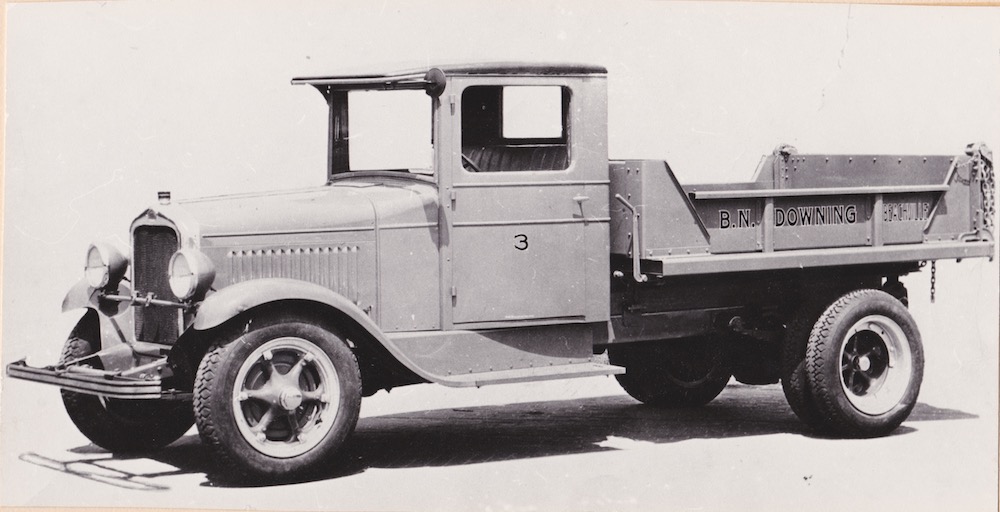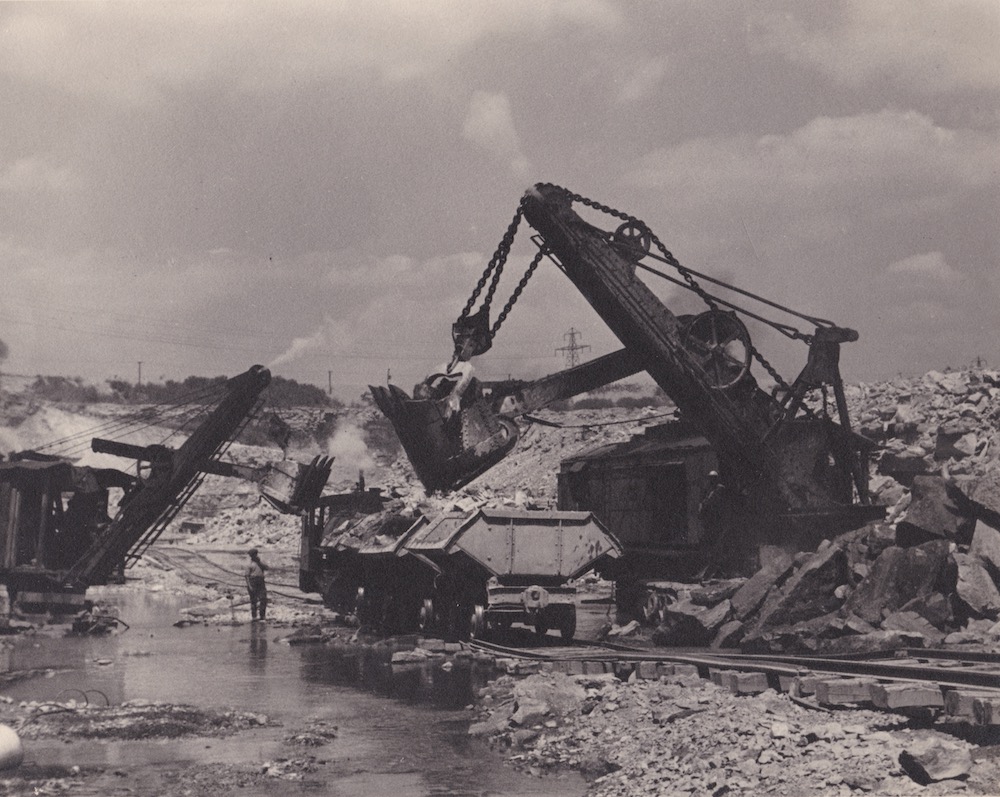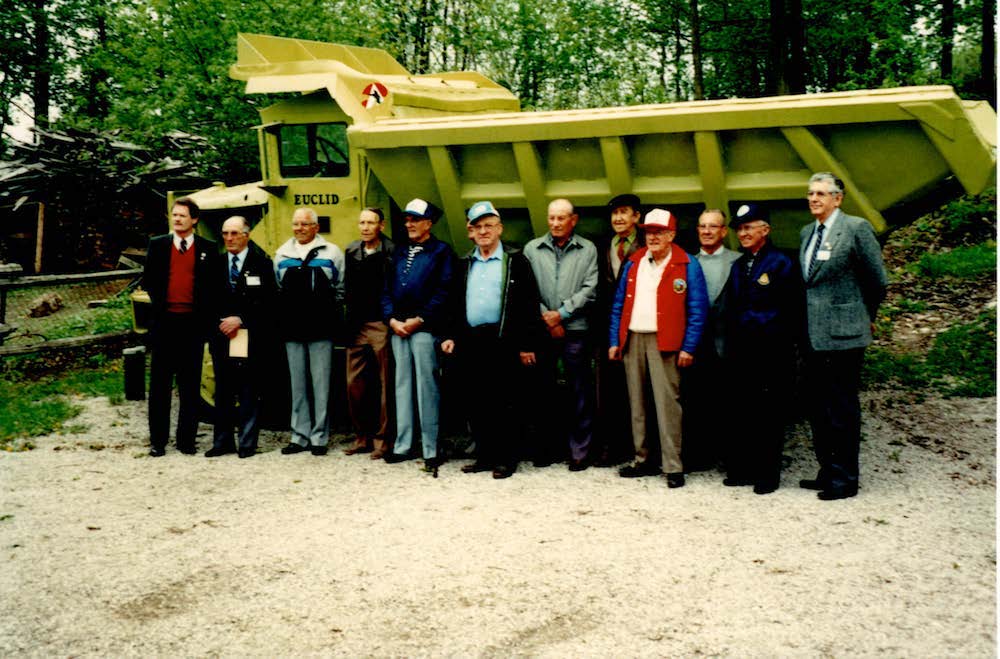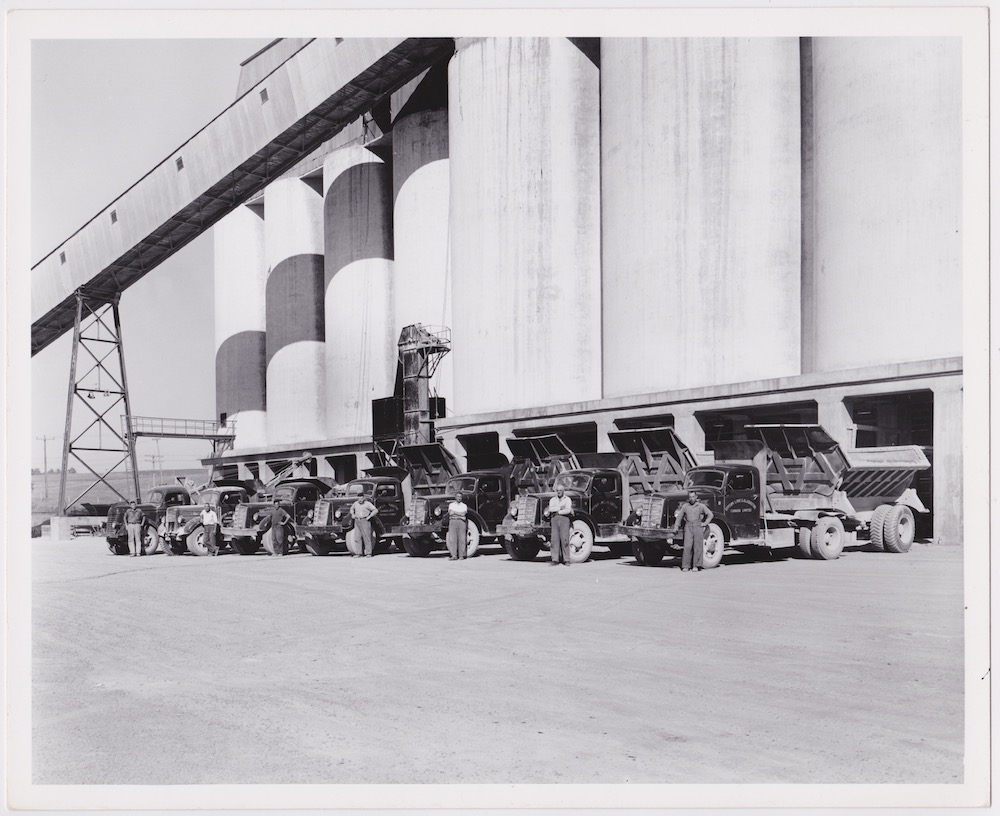An Impressive Fleet: The Age of Trucks
More automobiles took to the roadways when Beachville’s roads were paved in the early 1920s. Byron Downing (1878-1949) had the foresight, at this time, to buy several light-duty trucks. His trucks were the first used at the quarries. Next to Byron’s pick-ups were the Pierce Arrow trucks made between 1911 and 1938. These trucks had capacities of anywhere between 2 and 8 tons. Their cabs offered little insulation from poor weather and were extremely noisy. Nevertheless, they became useful at the pits and plants because they were not limited to the systems of tracks like the earlier locomotives had been.
Through the middle of the 1900s, the quarries purchased and operated increasingly large models of rear dump trucks. Partially, these upgrades were necessary to accommodate the volume of stone moved by ever-larger loaders. The diesel shovels replaced earlier steam shovels and could carry 400 tons of rock per hour with scoops that held 3 1/4 yards of stone each.
Euclid rock haulers, like the one below, were used at both North American Cyanamid and Chemical Lime (previously Innerkip Lime and Stone). These trucks carried anywhere between 15 and 27 tons of stone.
With a later fleet of trucks, North American Cyanamid workers moved about 600 tons of rock per hour from the blast area to their primary crushers. The diesel shovels were replaced by electrically operated shovels that could load over twice the tonnage of their predecessors – 7.5 tons of stone per bucket.





